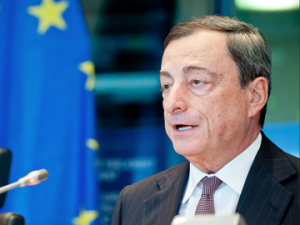
€1.1 trillion will be injected into Europe’s economies through an extensive programme of bond-buying, Mario Draghi has revealed.
At a conference on Thursday, the head of the European Central Bank (ECB) laid out plans to buy €60bn in bonds from banks across the continent, every month until September 2016. This, says the ECB, will drive down interest rates with a view to encouraging consumer and corporate borrowing, increasing spending and job creation to stimulate the eurozone’s stagnating economy.
In his speech, Draghi pointed to “economic slack” in the Eurozone and “subdued” money and credit developments, coupled with inflation indicators that are hovering at historical lows. Current levels of monetary accommodation are too low, he said, to counter the risks of persistently low inflation, making QE a necessary measure to stabilise prices.
“Looking ahead, today’s measures will decisively underpin the firm anchoring of medium to long-term inflation expectations,” he added.
“The sizeable increase in our balance sheet will further ease the monetary policy stance. In particular, financing conditions for firms and households in the euro area will continue to improve.
“Moreover, today’s decisions will support our forward guidance on the key ECB interest rates and reinforce the fact that there are significant and increasing differences in the monetary policy cycle between major advanced economies.
“Taken together, these factors should strengthen demand, increase capacity utilisation and support money and credit growth, and thereby contribute to a return of inflation rates towards 2%.”
The ECB has long toying with the idea of using quantitative easing to address inflation issues for some time, but this has met with strong opposition from Germany. To fuel its bond-buying spree, the bank will need to dramatically increase the amount of money that is being printed – something that German Chancellor Angela Merkel vehemently objects to, fearing over-inflation and currency instabilities.
The US, the UK and Japan have all implemented similar bond-buying schemes, with the US carrying out an extensive QE strategy between 2008 and 2014.






